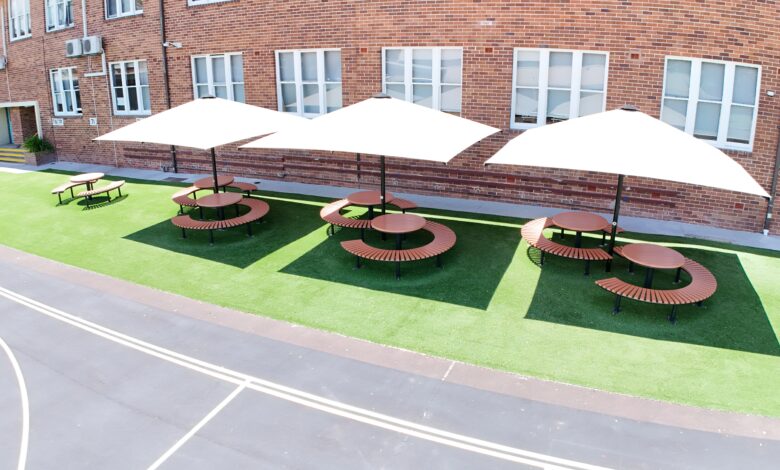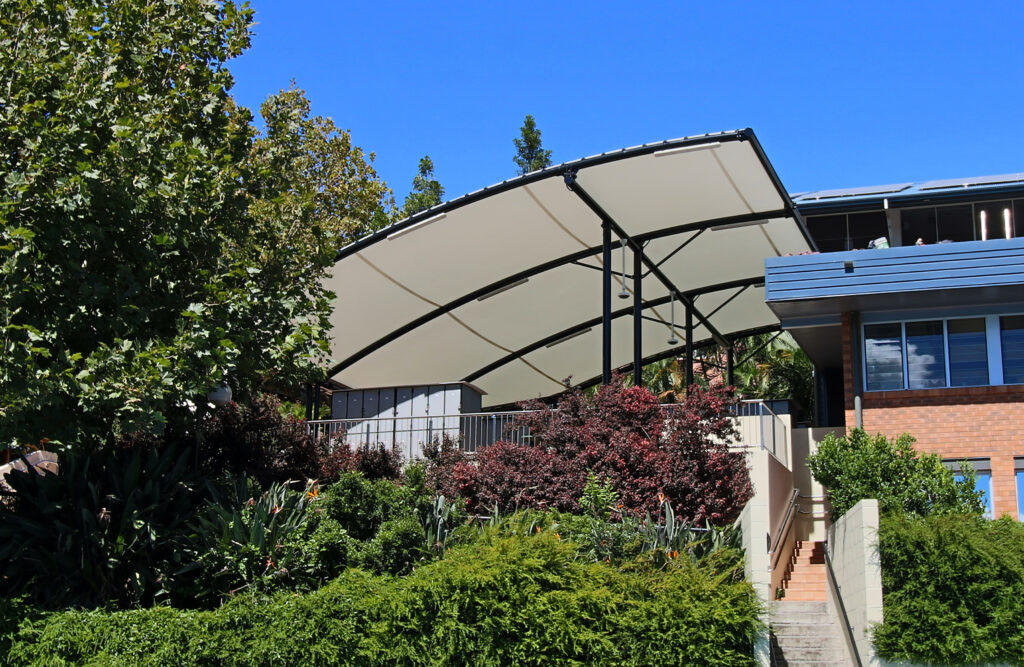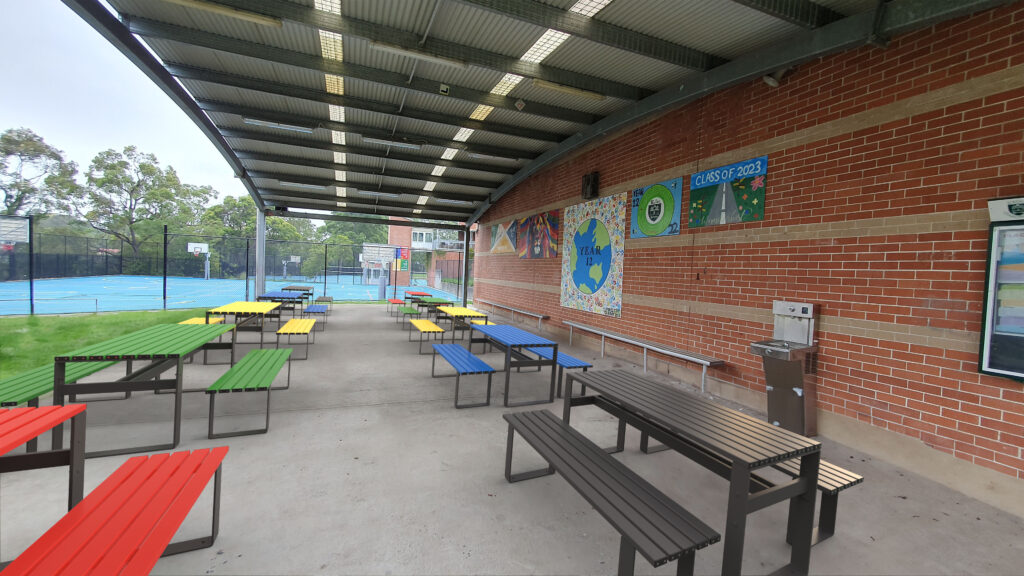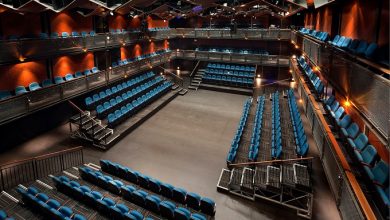
Some schools find that expanding rolls are outpacing infrastructure capacity. Other schools are looking to bring their students closer to natural resources for new and engaging ways to teach and learn. In either case, a covered outdoor learning space is a great way to diversify classroom settings and expand utility on your campus.
Creating an outdoor learning space means school students and staff can get more outside time, which has been proven to benefit both students and teachers. With a covered area, the harsh Australian sun, wind and rain won’t stop school communities from getting some fresh air, reawakening students who may be drifting off in a stuffy inside setting.
Read the latest print edition of School News HERE
The benefits of covered outdoor areas
Shane Scully from Scully Outdoor Designs Australia said that covered outdoor learning spaces can improve student engagement. “Sheltered outdoor areas add value for schools as they make learning more engaging and relevant, inspiring creativity and imagination”.
Mr Scully noted improved access to the outdoors may even mean schools see a reduction in behavioural problems, and improved attendance.
Covered outdoor learning spaces enhance the school environment by bringing staff and students closer to the outdoors, rain or shine, which may enhance wellbeing. Adding a covered outdoor space may encourage students and staff to spend more time outside, offering opportunities to get away from screens and textbooks. A brief nature break has been shown to relax busy and stressed minds, and even promote boosts in creativity. Being in nature can also decrease feelings of depression and anxiety.
Linday Stead, from Astra Street Furniture, said: “Spending time in natural environments is just as crucial for children’s development as learning to read and write—so why not bring learning outdoors?
“Outdoor classrooms provide an engaging way to support student development while promoting well-being. Fresh air, natural light, and open spaces have been shown to reduce stress, improve mood, enhance eyesight, and encourage physical activity—all of which contribute to better health and learning outcomes.”
Designing your outdoor space
When designing an outdoor learning area, schools should consider various factors including capacity, intended use and existing school features.
In addition to functioning as outdoor learning spaces, some covered outdoor areas can be multiuse, going from break areas to art spaces or even school weather stations.
Other uses of covered outdoor learning spaces could include housing vegetable patches, sensory gardens, or play structures and sandpits. These features could offer year-round transdisciplinary outdoor learning, as well as new ways to play and unlock children’s creativity.
With a sheltered area, students can access experiences they may otherwise miss out on, like tending to winter vegetables, or staging an outdoor production.

Diane Bramble from MakMax Australia noted that when designing a covered outdoor area, schools should first consider an outdoor space’s intended use.
“Will it be a fully weatherproof area suitable for all-weather teaching, outdoor assemblies, and performances, or is a shaded space for play and relaxation the primary goal? A waterproof structure provides greater flexibility for multi-use learning spaces, ensuring students and staff can utilise the area year-round.
“Schools should also consider the long-term value of their investment. While shade sails may offer a lower initial cost, engineered shade structures, such as tensile membrane canopies or modular shade structures, are designed for durability and longevity. An engineered structure can last for decades, reducing ongoing maintenance costs and providing a permanent architectural feature that enhances the school’s environment.”
Mr Stead agrees that schools should think about the intended usage of their outdoor spaces as a first port-of-call. He said questions the school should ask include: “How many students and classes might share the space at once? Will it be multiuse, that is, a social area during lunchbreaks, or accessible to the wider community after hours? Is the space wheelchair accessible, and does it have appropriate circulation?
“Schools should also think about integrating the covered outdoor space with existing school architecture, and whether the degree of weather protection is fit for use,” Mr Stead said.
Schools designing covered outdoor learning areas may want to consider existing features of the campus. Placing a covered outdoor area beside a significant tree, other natural features or an existing sports field may offer school communities new ways to interact with the grounds, boosting wellbeing or community spirit.
Learning outside the classroom walls
The natural world is rife with learning opportunities, and these are often underutilised in schools. What flora and fauna exist on school grounds, for example, and how can these resources be turned into learning opportunities for students?
Student-led investigations into the natural world become more accessible with outdoor learning areas, and help to foster students’ curiosity about the environment. Making the outdoors more accessible also encourages students to be engaged with the world around them.
Outdoor learning spaces have endless potential, and schools often already have suitable spaces, such as courtyards between buildings or a common building that could benefit from an outdoor extension, or an open space that would become more functional with the addition of a covered canopy.
Furnishing your outdoor space
Similar to choosing a shade structure, the area, intended use and local weather patterns will influence what types of furniture would be suitable for covered outdoor areas. Outdoor furniture for such spaces should be durable, weather resistant and easy to clean.

Mr Stead said outdoor classrooms need age-appropriate and durable furniture that enhances learning and comfort.
“Schools may wish to consider four-sided and two-sided picnic settings for collaborative learning, curved and angled benches to create engaging and flexible seating layouts, and wheelchair accessible furniture to ensure inclusivity for all students.”
Universal design is also crucial for upholding the rights of people with disabilities. Around one in five, or 20 percent of Australians have a disability. People with a disability often face barriers to work, study, and taking part in everyday life. This includes school settings where outdoor areas can be inaccessible to people with disabilities, especially those with mobility challenges.
Traditional outdoor areas can have uneven and unsuitable terrain such as grass and bark, which can mean people with disabilities can have difficulty accessing outdoor spaces. This is especially troubling when considering outdoor spaces have been shown to improve wellbeing, and almost a third of adults with disability experience high or very high levels of psychological distress.
To ensure all outdoor spaces are accessible and inclusive, schools should think about the existing outdoor spaces on campus—are they currently welcoming to all staff and students? A new covered outdoor area could significantly improve outdoor access for people with disabilities on campus, ensuring your school better upholds their rights.
Adding new spaces like outdoor learning areas is also a chance to develop the school culture and values. Involving students and staff in the design of a new space creates community and a sense of shared purpose. Shade structures are often highly customisable, with size and canopy colours available to suit individual schools.
Finally, Mr Scully suggests schools should design the space to integrate with the surrounding school environment, with age-appropriate settings. “Schools should also collaborate with both teachers and students to select either a natural colour scheme or brightly coloured outdoor furniture to enhance surroundings.”







